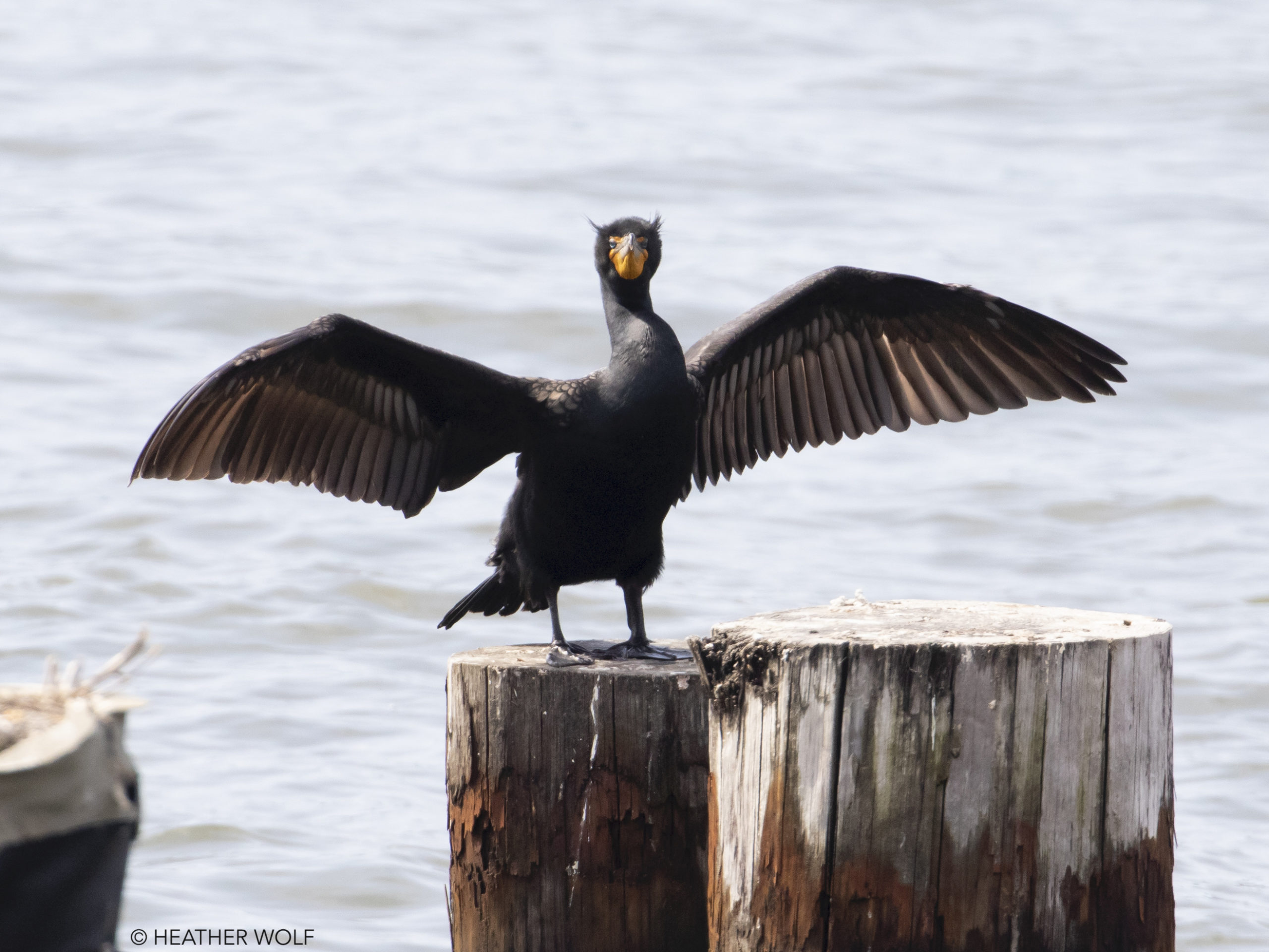Brooklyn Bird Watch: April 18
Double-crested Cormorant. Scientific Name: Nannopterum auritum

Today, Brooklyn Bird Watch features a Heather Wolf photo of the Double-crested Cormorant, seen in Brooklyn Bridge Park. When I’m in Florida and visit a pier I often see these birds on the edge of the pier drying their outstretched wings. The Cornell lab calls them “prehistoric-looking” with orange and yellow facial skin. Although from a distance they appear to have no special markings that would make them stand out visually like some birds, they have some fascinating features. For example, the inside of their mouths is bright blue and they have very exotic looking aquamarine eyes that “sparkle like jewels.”
Although they are called double-crested, you only see this feature during the breeding season. And once you hear one of these birds you’ll never make the mistake of thinking it might be a song bird. They make croaks and gargling sounds. To hear these croaks and gargling sounds might not be very pleasing, compared to a Cardinal or a Mockingbird, but to another cormorant, it’s could be just what they like to hear.
Cornell says they are “experts at diving” and will dive to depths of 24 feet and stay underwater for more than a minute.

Brooklyn Boro
View MoreNew York City’s most populous borough, Brooklyn, is home to nearly 2.6 million residents. If Brooklyn were an independent city it would be the fourth largest city in the United States. While Brooklyn has become the epitome of ‘cool and hip’ in recent years, for those that were born here, raised families here and improved communities over the years, Brooklyn has never been ‘uncool’.